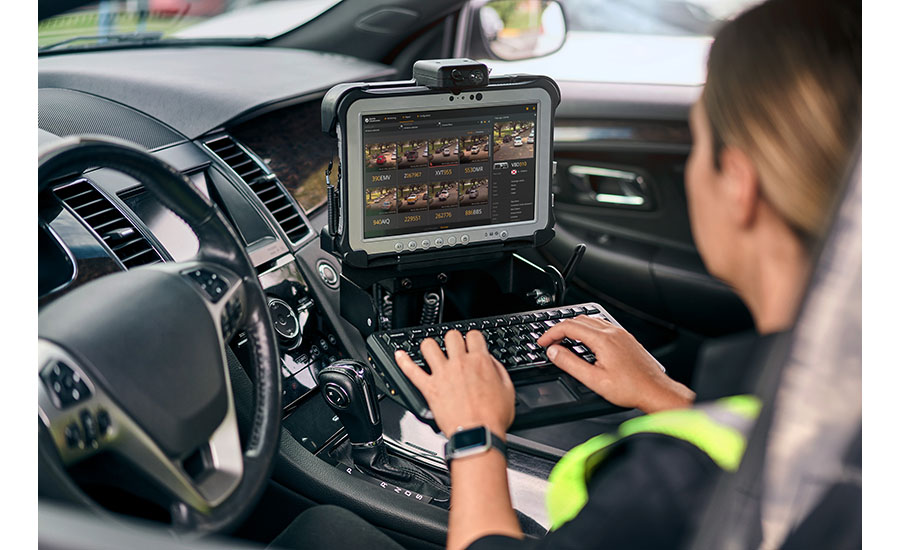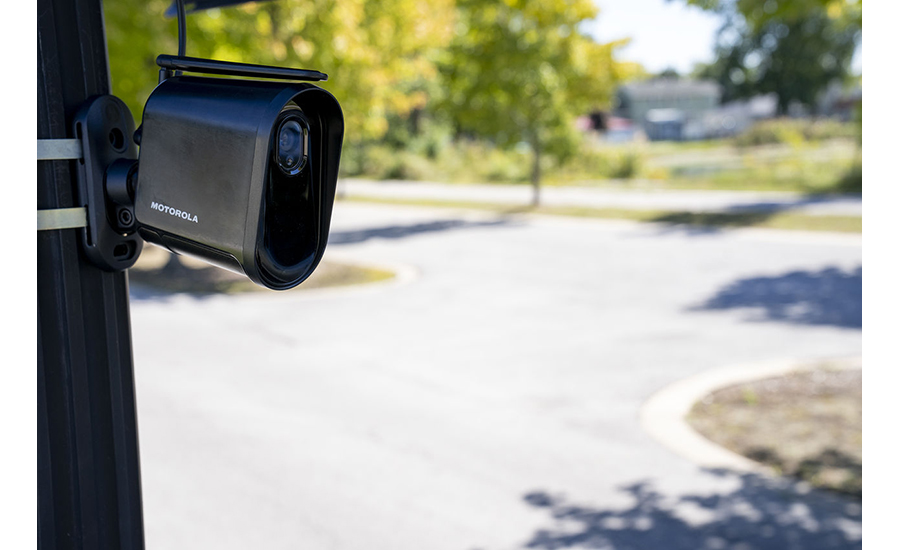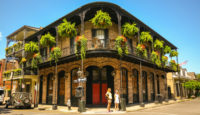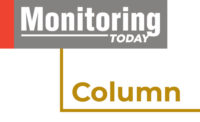For those security integrators who may have been hesitant to fully embrace license plate recognition (LPR), deterred by ill-fated installation experiences and technical complexities, it’s time for a fresh perspective.
Recent advancements have reshaped the technology — also referred to as automatic license plate recognition (ALPR) — now making it more accessible and affordable to a much wider base of end customers.
“LPR is expanding from just plate number reading into a more holistic text reading and information extraction from vehicles. Some systems can also read other tags and markings like hazard placards and shipping/cargo labels.”
— David Nieweg, Milestone Systems
“People that maybe shied away from LPR should really revisit it because it’s not what it was five years ago, or even three years ago,” advises Larry Legere, director of AutoVu Sales, North America, Genetec, Montreal. “The complexity of installing and configuring and maintaining is not the same as it was. A lot of SIs are still shying away from LPR because they got burned in the past. Maybe they put the camera in the wrong spot, it cost them a lot of money. It’s not like that anymore.”
Formerly associated mainly with highway use, LPR technology is now accessible to small cities, towns, mobile enforcement units and even corporate environments, thanks to its affordability and simplified deployment. SDM consulted with a half dozen subject matter experts to discuss the technology and the current marketplace. Read on to delve into the latest trends, product advances and revenue opportunities within the LPR landscape.
Incorporating LPR Into Overall Video Solution
Incorporating LPR cameras and systems into an overall video and security solution can help improve security, streamline access control and enhance overall situational awareness. Specific integration methods and features are flexible based on the application and requirements of the security system already in place, explains Hamish Dobson, corporate vice president, enterprise physical security, video security & access control, Motorola Solutions, Chicago. For example, in a retail setting, LPR is routinely installed at parking lot entrances and exits alongside a multi-view camera to provide security operators with added angles in which to view security concerns.
“LPR technology can play a key role in identifying when a banned person enters a school or business’s campus, in controlling access to secure parking lots or in combating organized retail crime,” Dobson says. “The technology’s software and analytics can be implemented on a dedicated LPR camera, usually at the entrance or exit to a parking lot, or via general purpose security cameras. The technology makes parking lot video security data easier for security personnel to search through, enabling them to filter for specific vehicle types or events within a given timeframe, even if that data is incomplete, like a partial plate number.”

The particulars of how LPR cameras are incorporated into an overall video and security system can often depend on the vertical market, Legere explains. However, no matter the public sector or private, there are two main performance goals to accomplish for most any deployment setting: real-time investigation and/or post-event investigation.
In the public sector, such as a municipality, consider a robbery that has been committed. Authorities may immediately want to identify the getaway car driven by the perpetrators.
“I’m looking for the license plate ABC123, I get a hit. But which direction was it going? Did the person go left? So that’s where they go to the video cameras and now they’re looking for video of the car,” Legere says. “That’s the incorporation between taking the license plate data, knowing where it is, then looking for the video cameras around that area, and other information. Where is it going, what direction?”
In the private sector, such as a car lot, it’s a similar idea. The end user may want to know in real time who is in the lot. An event happens and video is then pulled up for review. The post investigation commences. “There was a car stolen. Was anybody around at the time? I know the car was stolen at a certain time because I can put in the license plate and I know when it left the building,” Legere describes. “I now want to look at other video. Who was in the lot at the time? Was there anyone else?”
Possibly an employee was viewed in the lot at the same time the car was stolen. Now that person can be queried if they witnessed anything potentially related to the theft.
LPR cameras and systems can be incorporated into a variety of solutions from on-premises server-based to cloud applications, explains Mike Poe, director of product management, 3xLOGIC, Fishers, Ind. “These applications can be used as standalone, but full integration within a VMS or cloud application is preferred and is the most effective in providing actionable data and functionality to the customer,” he says. “A fully integrated solution provides seamless sharing of video and data within the day-to-day operations and becomes part of that application’s ecosystem.”
David Nieweg, community program manager, Milestone Systems, Lake Oswego, Ore., also emphasizes that integrating LPR into the VMS is preferred, as it allows making use of the software’s capabilities like alerts, notifications, maps, etc. Conversely, he says, standalone cloud LPR solutions may have their own cameras and interface, acting as a disparate system.
“Deep learning allowed us to do a lot more processing in the cloud because of how the algorithms work. We can reduce the power consumption in the LPR camera and make it easier to deploy in multiple locations. This broadens the market for everybody.”
— Larry Legere, Genetec
“The benefit of utilizing LPR in an open platform video management system is the ability to run integrated and third-party LPR solutions concurrently,” Nieweg adds. “This provides flexibility to use different types of LPR solutions for various applications across the site. Overall, embedding LPR into the VMS leverages the system’s functionality and prevents siloed systems and disjointed workflows.”
Historically, LPR required expensive specialty cameras and very specific camera calibration and camera positioning, explains Navanee Sundaramoorthy, director of AI products, Eagle Eye Networks, Austin, Texas. Another limitation of traditional LPR systems is that they cannot provide video, only snapshot images of vehicles and license plates. Much has changed in the past few years.
“Today, there is no need to purchase specialty equipment or to purchase an IP camera from a specific manufacturer. Cloud-based LPR technology can be added to a standard IP camera,” Sundaramoorthy says. “In the new integrated cloud-based solutions, the VMS functions as a single pane of glass for both video and license plate data. The newer LPR systems are open and can incorporate other video technology solutions — such as face capture or overview capture — into the dashboard.”
If you look at the history of license plate recognition, the technology was used typically by law enforcement on highways and other roadways to find criminal activities, explains Joe James, solutions manager, Hanwha Vision America, Teaneck, N.J. But in recent years license plate data is increasingly being used for many related applications such as supplementing “on premise” security that often incorporates into a VMS. “Today’s video security is not just monitoring activities,” James says, “but also creating actionable alerts on events that happens in a surveillance system.”
This mostly includes people, objects and vehicle-related events and actions. Incorporating license plate data and vehicle attributes such as the color, model and type of vehicle provides valuable information that enhances the overall effectiveness of a video surveillance system, James continues. “In modern video surveillance systems, license plate information comes in from the license plate-enabled camera, where the vehicle information can be viewed and searched for within the VMS. … By having all the different video data in one place … users can capture a complete history of events that happened, whether it is related to different incidents involving various touch points.”
The first thing customers need to decide when deploying LPR is if they want true object character recognition (OCR) or if they just want a camera that has the ability to see a license plate, no matter the lighting conditions, explains Steve Jussaume, solutions engineer, Axis Communications, Chelmsford, Mass. If they choose OCR, they need to define the challenges they want to solve so that they can figure out the best way to implement LPR into their everyday workflow.
“Their workflow can be passive, and the information used retroactively; or proactive, in which case operators are receiving real time alarms,” he says. “For example, many LPR applications are designed to collect data and send it into a repository tied with video for after-the-fact searching based upon an incident.”
Jussaume, however, alerts security integrators to beware that municipalities across the country are going in a different direction these days by using the LPR system to trigger alerts based on hotlists to perform proactive policing in their communities. “LPR is a vital tool for communities, however the way they are used is dependent upon the needs, resources and capabilities of the end customer,” he explains.
Among Most Notable LPR Advancements
The use of machine learning for both license plate recognition and a vehicle’s make, model and color data have driven the advancements of the technology, Poe notes. “Using vast amounts of data to hone the models provides highly accurate recognition of not only the license plate, but the vehicle make, model and color,” he says.
Extracting these additional vehicle attributes has resulted in much higher plate reading confidence levels than ever before. This expanded metadata enriches the value of the LPR data, Nieweg says.

“LPR is expanding from just plate number reading into a more holistic text reading and information extraction from vehicles,” he says. “Some systems can also read other tags and markings like hazard placards and shipping/cargo labels. This broader scope of readable information, coupled with higher accuracy, provides the industry with many robust search and analysis capabilities.”
Advances in LPR technology have largely been driven by the evolution of optical sensors and artificial intelligence (AI) technology. The technology’s ability to read difficult plate and tag types has significantly increased, where it can now recognize state plates along with make, model, color and vehicle classification, Dobson says. “Our LPR cameras are even tested to be able to read paper tags and identify when a plate is missing.”
The flexibility of LPR options — from fixed and mobile to quick-deploy — has also rapidly evolved in recent years to meet a variety of businesses’ different use cases and scenarios, Dobson adds. “Our LPR cameras also have a quick deploy option, where customers can use them in places without power or connectivity should a quick need arise in an investigation.”
Some of the most significant advancements in LPR technology, notes Jussaume, are related to back-end systems. These systems are able to combine license plate data with images, video and suspect information, which can be quickly accessed and shared amongst many stakeholders. “This allows end customers to take a more proactive and strategic approach to their jobs versus an after-the-fact approach,” he says.
Legere also emphasizes how machine learning has allowed the industry to move beyond just the license plate to deploying a vehicle-centric investigative tool. Another significant advancement, Legere highlights, are easy-to-deploy, infrastructure-free solutions that reduce the total cost of ownership and help end customer’s maximize their budget and resources.
For example, Genetec’s AutoVu Cloudrunner solution includes the CR-H2, a high-performance, solar-powered camera that does not require a traditional power source or cabling.
“Deep learning allowed us to do a lot more processing in the cloud because of how the algorithms work,” Legere explains. “We can reduce the power consumption in the camera and make it easier to deploy in multiple locations. “This broadens the market for everybody. And you don’t have to be a specialist. So from a systems integrator standpoint, it’s an easier market to get into. You don’t have to have a lot of specialty.”
Emerging Applications & Growth Markets
Because of the combined accuracy and expanded analysis capabilities, the industry is experiencing broad adoption of LPR systems across many industries and use cases. Typically, Nieweg of Milestone Systems explains, heavy LPR users include healthcare facilities for parking management, retail stores for loss prevention, educational institutions for access control, and law enforcement for vehicle identification and tracking.
“But license plate recognition use is growing much wider,” he adds. “Most any organization managing a facility can benefit from the forensic analysis of incidents and the proactive mitigation by identifying vehicles of interest. From casinos to banks to large private properties, the technology has become universal for managing known versus unknown vehicles.”
Nieweg also says it is important to recognize there is no universal LPR solution suitable for every use case. In fact, a large facility — such as a stadium — may deploy multiple approaches for a comprehensive LPR solution.
“But in all cases, the technology and software must align closely with the organization’s specific requirements and applications,” he says. “An open platform video management system opens the door to potentially hundreds of different LPR technologies, allowing the integrator and the end user to design a solution that precisely meets their current and future LPR needs.”
While LPR has been around for more than 20 years, Sundaramoorthy of Eagle Eye Networks says, it has evolved significantly in the past three years. LPR initially required very expensive high-end LPR cameras, and it was primarily used for city surveillance and critical infrastructure. Newer, less expensive, cloud-based systems that work with standard IP cameras are more accurate and more affordable, he says.
“Parking is actually a new vertical market for security integrators,” Sundaramoorthy adds. “Many organizations have parking lots or parking facilities, and if they can improve efficiency, they can save money, and even make money with LPR. LPR is now a money maker, rather than a cost-center.”
James of Hanwha points to two main segments of LPR usage where the technology’s adoption is emerging. One is traditional “roads and highway” monitoring. These cameras have been much more efficient in terms of faster data processing, low-light performance, multi-lane LPR reads, among other performance attributes.
“IP cameras have become very adept at reading license plates and can be purpose-tuned to see a license plate even in the most challenging lighting conditions.”
— Steve Jussaume, Axis Communications
“So these are being used in high-end applications such as cashless tolling or express lanes where there is no stop-and-go traffic,” James continues. “For example, states like California, Colorado, Florida, Georgia, Massachusetts, Texas, New York and New Jersey are all doing cashless tolling on highways, where they primarily identify the license plate and collect the tolls. Since the accuracy is nearly 100 percent, traditional LPR applications for crime detection also has increased to an all-time high.”
James notes a second key market to adopt LPR technology: corporate video security. “The perfection of technology at an affordable price, even for small organizations, is extending overall surveillance to their outdoor environment such as parking lots, visitor management, etc., to gain new efficiencies,” he says.
Cloud LPR database management software combined with LPR IP cameras that can process OCR on the edge have greatly increased the widespread adoption of LPR technology across industries, says Jussaume of Axis Communications. By leveraging the processing power of the camera, only the data and/or a snapshot of the video needs to be sent up to the cloud.
“This greatly reduces the amount of bandwidth the camera utilizes and therefore makes the whole system more efficient. This efficiency and cloud connectivity has made LPR solutions more effective and is allowing end customers to truly leverage the power of data,” he adds. “This has made security and public safety practitioners more effective, which has driven the demand for more LPR.”
Dobson of Motorola Solutions says there has been an increase in the use of LPR technology to aid in combating organized retail crime and ensuring customer and employee safety in parking lots. “We have also seen an increase in corporate campuses and schools using LPR technology to notify them when banned individuals enter campus, such as an expelled student or a parent who no longer has custody rights,” he adds.
Many businesses that use LPR technology seek a solution that’s flexible, customizable and designed to operate in almost any environment or weather condition, Dobson adds. “Simple installation, the ability to integrate with their existing video management system and the ability to adapt along with the business’s evolving needs are also key.”
Among emerging applications that are driving the LPR market, Legere of Genetec cites an end user’s ability to share data with law enforcement. These are private to public scenarios, such as a hotel that experiencing vehicle vandalism or theft in its parking lots. Video and other evidentiary information can be shared with police who can then be on the lookout for vehicles or suspects. Legere is quick to clarify these are private to public or police to police data-sharing scenarios. Police are not sharing data in the other direction.
“You really start to build a network for the ability to share data,” he explains. “But it’s important to note that there are a lot of safeguards as to who can share data with whom. It’s not a free- for-all. There are a lot of security protocols put in place and a lot of safeguards put into audit trails.”



